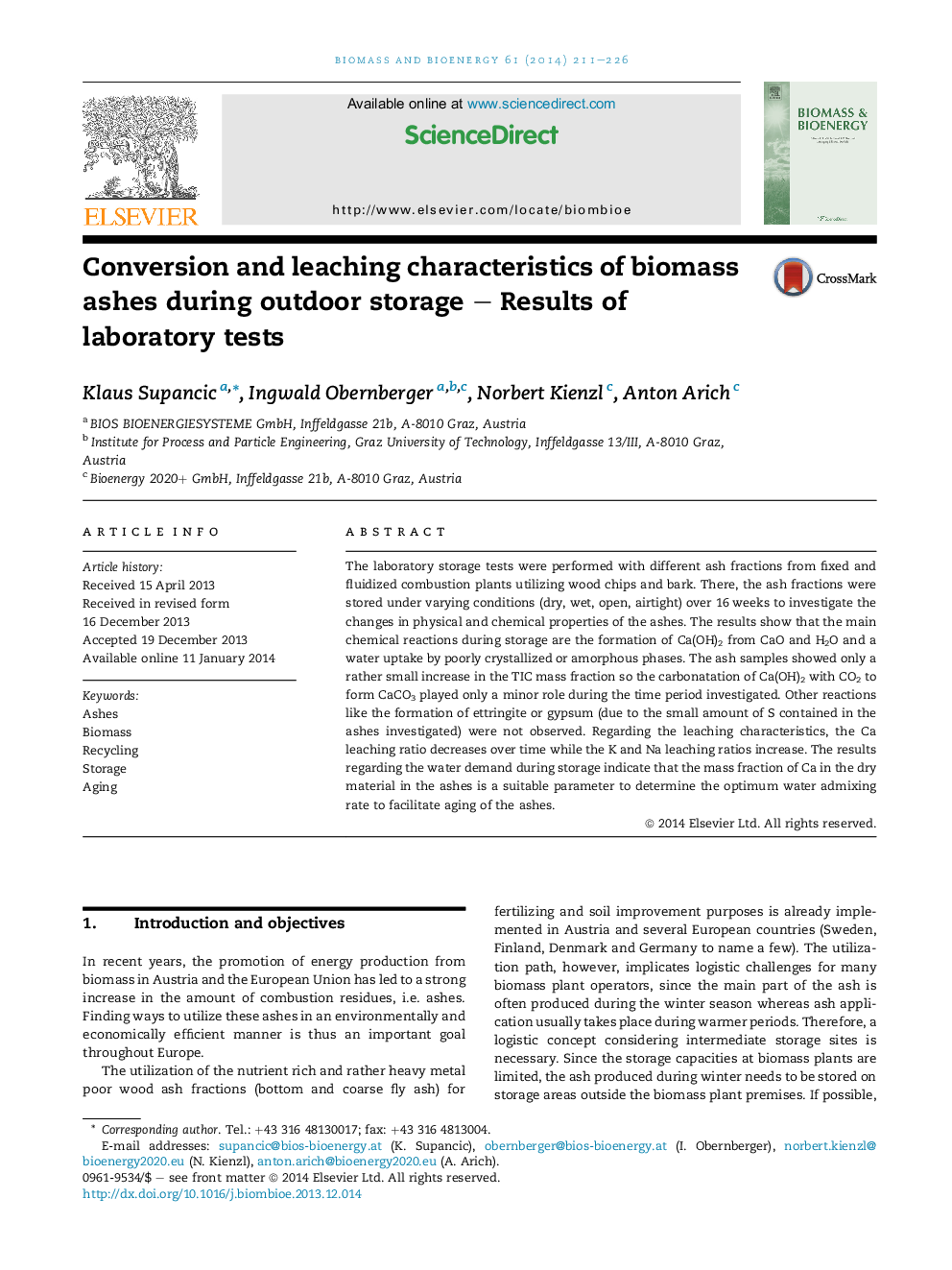| Article ID | Journal | Published Year | Pages | File Type |
|---|---|---|---|---|
| 676963 | Biomass and Bioenergy | 2014 | 16 Pages |
•The main reaction during storage is the formation of Ca(OH)2 from CaO and water.•Water is also attached to amorphous or poorly crystallized phases during storage.•Ca and Mg leaching ratios decrease while K and Na leaching ratios increase over time.•The optimum water mixing rate depends on the Ca mass fraction in the ash.
The laboratory storage tests were performed with different ash fractions from fixed and fluidized combustion plants utilizing wood chips and bark. There, the ash fractions were stored under varying conditions (dry, wet, open, airtight) over 16 weeks to investigate the changes in physical and chemical properties of the ashes. The results show that the main chemical reactions during storage are the formation of Ca(OH)2 from CaO and H2O and a water uptake by poorly crystallized or amorphous phases. The ash samples showed only a rather small increase in the TIC mass fraction so the carbonatation of Ca(OH)2 with CO2 to form CaCO3 played only a minor role during the time period investigated. Other reactions like the formation of ettringite or gypsum (due to the small amount of S contained in the ashes investigated) were not observed. Regarding the leaching characteristics, the Ca leaching ratio decreases over time while the K and Na leaching ratios increase. The results regarding the water demand during storage indicate that the mass fraction of Ca in the dry material in the ashes is a suitable parameter to determine the optimum water admixing rate to facilitate aging of the ashes.
